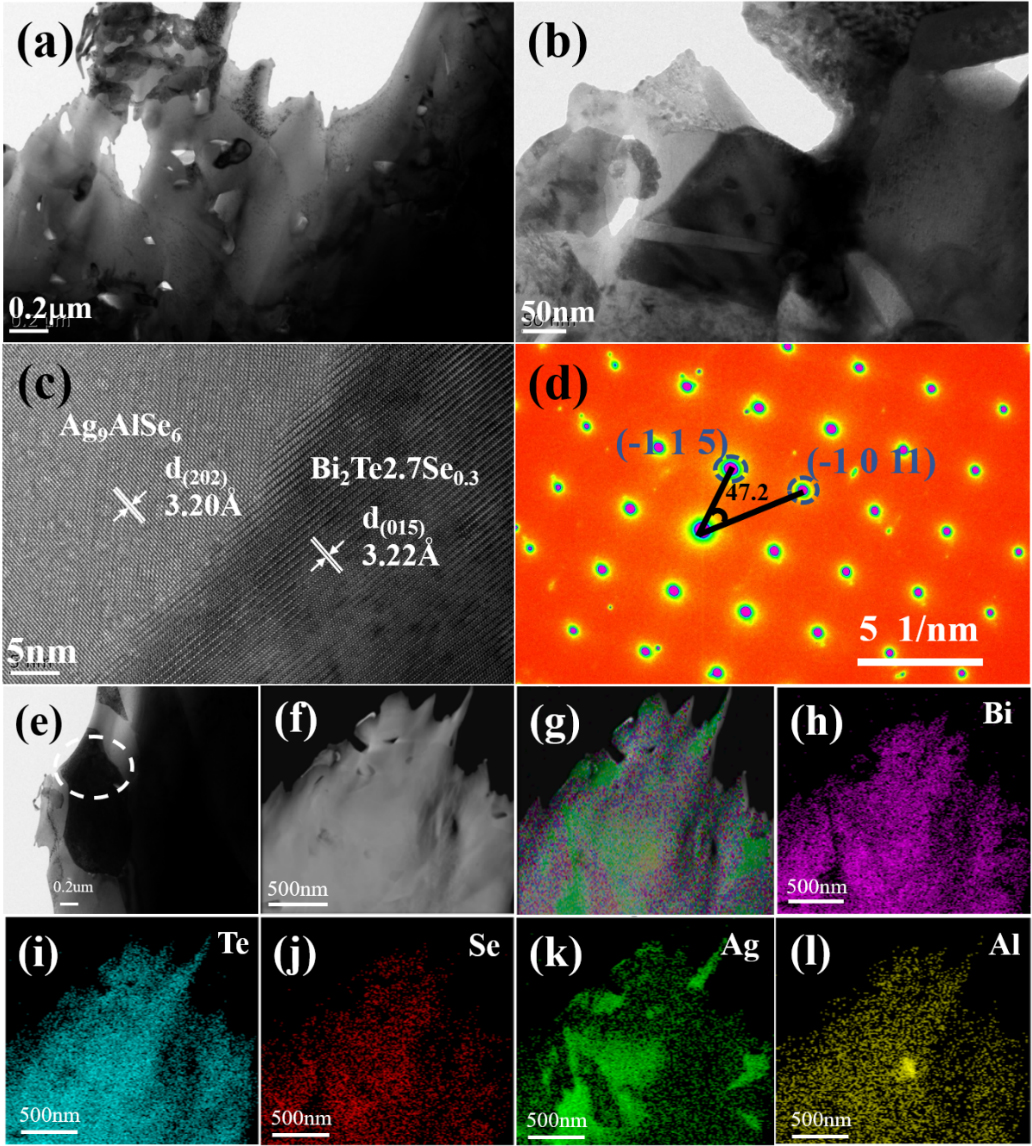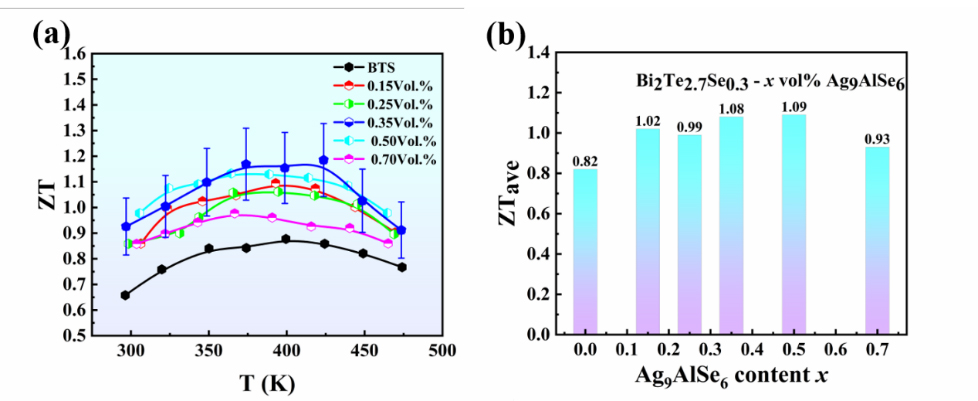
Recently, a research team led by Prof. QIN Xiaoying from Hefei Institutes of Physical Science of Chinese Academy of Sciences found the thermoelectric properties of N-type Bi2Te2.7Se0.3(BTS) could be improved by introducing a small amount of Ag9AlSe6 nanoparticles into BTS matrix.
The thermal conductivity of the composite sample with 0.35vol.% Ag9AlSe6 was significantly reduced, resulting in a maximum ZT (figure of merit) of 1.2 (423K) and an average ZT of 1.1 in the 300-473K temperature range.
Relevant research works were published in Inorganic Chemistry Frontiers.
Thermoelectric devices are composed of P-type and N-type thermoelectric materials. At present, great progress has been made in the improvement of P-type room temperature thermoelectric material ZT. However, developing high-performance (large ZT) N-type thermoelectric materials near room temperature is more challenging, which hinders the conversion efficiency of thermoelectric devices and prevents them from being widely used.
Bi2Te3 is currently recognized as one of the well-known alloys that can both generate electricity and cool at room temperature. However, the low thermoelectric value ZT and energy conversion efficiency of N-type Bi2Te3 limit its commercial application. Therefore, improving the thermoelectric properties of N-type Bi2Te3 is of great significance to promote its industrial application.
Finding the optimal second phase is the first and key task to design and manufacture a composite system material with excellent performance (including function and structure). Many studies have explored different dispersed phases of BTS to obtain better thermoelectric performance.
In this research, scientists investigated the thermoelectric properties of BTS-xvol % Ag9AlSe6 (x= 0, 0.15, 0.25, 0.35, 0.50 and 0.70) samples by introducing N-type nanoparticles Ag9AlSe6 into BTS. The results showed that when Ag9AlSe6 nanoparticles were added to BTS, the phonon scattering and phase boundary were enhanced, the Seebeck coefficient was enhanced and the thermal conductivity was reduced. The thermoelectric performance of composite sample BTS-0.35vol% Ag9AlSe6 was improved by about 40% compared with the original BTS, and the ZTmax value reaches 1.2 (423K). The average ZTave of BTS-0.50vol% Ag9AlSe6 was 1.1 (300K-473K).
This work showed that the addition of Ag9AlSe6 nanoparticles was an effective way to improve the thermoelectric properties of BTS, which was of great significance for the regulation of the thermoelectric properties of N-type bismuth telluride alloys.
The above work was supported by the National Natural Science Foundation of China, the Natural Science Foundation of Anhui Province, and the President's Foundation of Hefei Institutes of Physical Science .

FIG. 1. (a) The low magnification TEM image; (b) the medium magnification TEM image; (c) the high magnification TEM image for BTS-0.35Vol% Ag9AlSe6; (d) the selected area electron diffraction (SAED) (false-colored); (e-l) the medium magnification TEM image and the EDS mapping for Bi, Te, Se, Ag and Al. (Image by CHEN Tao)

FIG. 2. (a) Dependence of the figure of merit (ZT) on temperature and (b) dependence of the average figure of merit (ZTave) on xvol% Ag9AlSe6 (x = 0, 0.15, 0.25, 0.35, 0.50 and 0.70) in BTS-xvol% Ag9AlSe6 samples. (Image by CHEN Tao)